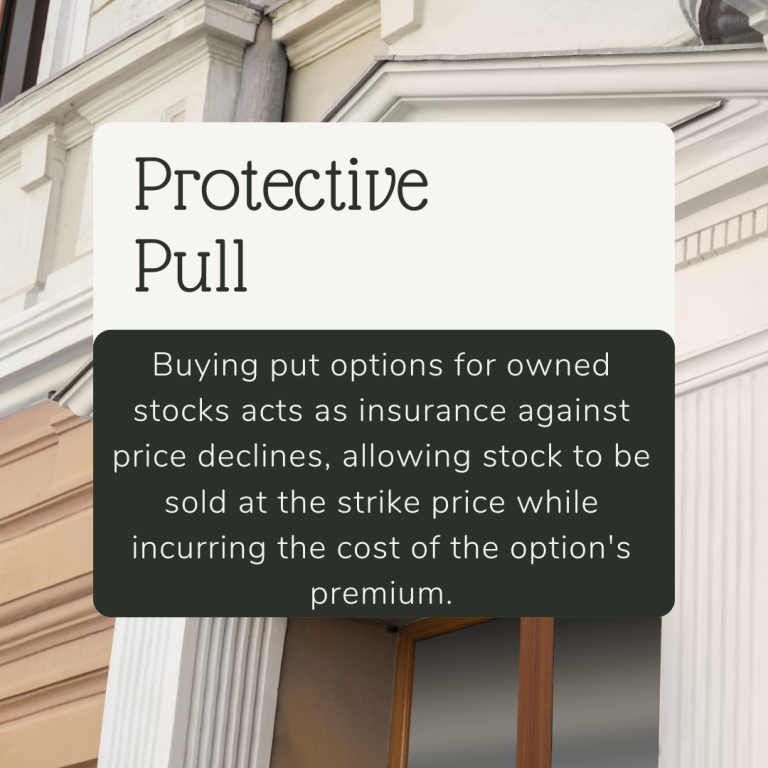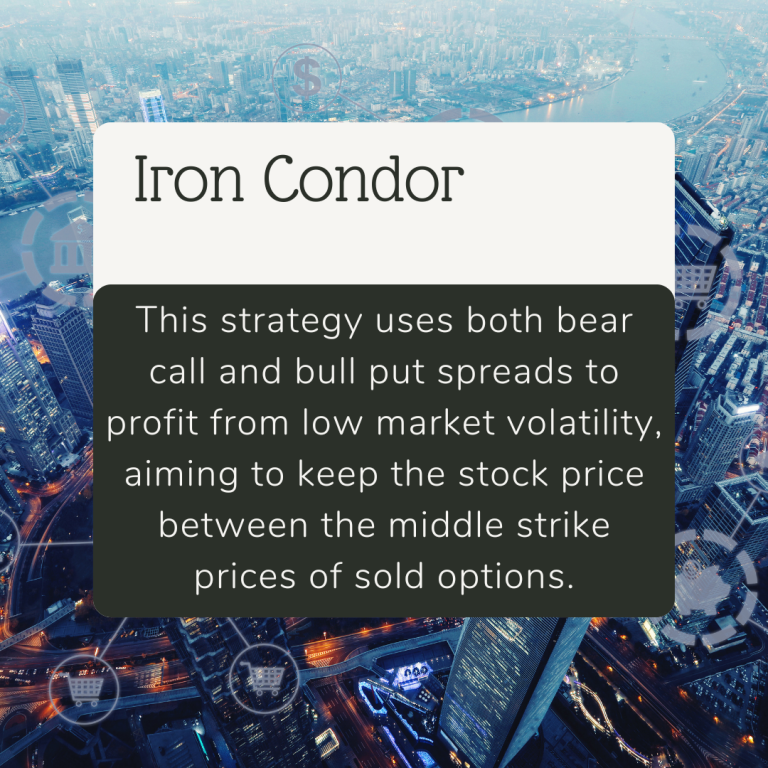- Home
- Options Trading
- Introduction to Options Trading 101
Introduction to Options Trading 101
Options trading offers a versatile path for investors to play the stock market with flexibility and leverage. Unlike traditional buying and selling of stocks, options trading involves purchasing contracts that give the right, but not the obligation, to buy or sell an underlying asset at a predetermined price before a certain date. This comprehensive guide covers the essential concepts of options trading through ten detailed sub-topics, aimed at providing beginners with a solid foundation in the mechanics, strategies, and risks of options trading.

What are Options?
Options are financial derivatives based on the value of underlying securities such as stocks. An option contract offers the buyer the right to buy (call option) or sell (put option) the underlying asset at a specified strike price up until a predetermined expiration date. Unlike stock trading, options trading gives you leverage, potentially amplifying returns on investment.
Types of Options
In the world of options trading, there are primarily two types of options available to traders: call options and put options. Each type serves a specific purpose and is used under different market conditions to execute varying investment strategies. Understanding these options and their distinct characteristics is essential for anyone looking to venture into options trading.
Call Options
A call option gives the buyer the right, but not the obligation, to buy a specific quantity of the underlying asset at a set strike price on or before the option’s expiration date. Investors purchase call options when they anticipate that the price of the underlying asset will increase.
For example, if an investor believes that the stock price of Company X, currently at $50, will rise, they might buy a call option with a strike price of $55. If the stock price exceeds $55 before expiration, the investor can exercise the option to buy shares at $55, potentially selling them at the higher market price and making a profit minus the premium (the cost of the option) paid. Call options are thus popular instruments for those bullish about the market.
Put Options
Conversely, a put option grants the buyer the right, but not the obligation, to sell the underlying asset at a predetermined strike price up until the expiration date. This type of option is typically purchased by investors who believe that the price of the underlying asset will decline in the future.
For instance, if an investor thinks that the stock of Company Y, priced at $30, is going to drop, they might buy a put option with a strike price of $25. If the stock price falls below $25, the investor can buy the stock at the lower market price and exercise the put option to sell it at $25, thus making a profit on the difference, less the premium paid. Put options provide a strategic advantage for those who are bearish or seeking to hedge against declines in their existing portfolio positions.
These two fundamental types of options empower traders with the flexibility to strategize based on their market outlook and risk tolerance. By purchasing a call option, traders opt for the possibility of purchasing an asset at a lower price in a rising market. In contrast, buying a put option provides the security of being able to sell at a higher price in a falling market. Each type of option not only reflects the trader’s viewpoint on the market’s direction but also their approach to risk management, potentially limiting losses while offering significant upside opportunities.
Thus, whether aiming for profit through bullish strategies with calls, or protecting investments against downturns with puts, understanding the nuances of each option type is crucial in crafting effective trading strategies.
Options Trading Terminology
To navigate the options trading landscape effectively, it’s crucial to understand the specific terminology used. These terms are foundational to executing trades and understanding options strategies. Here’s a deeper look into the critical jargon every options trader should know:
Also known as the exercise price, the strike price is the predetermined price at which the holder of an option can buy (in the case of a call option) or sell (in the case of a put option) the underlying asset. The choice of strike price can influence the risk and potential return of an option. It essentially sets the benchmark that the underlying asset must surpass for the option to have intrinsic value at expiration.
This is the specific date and time when the option contract becomes void. After the expiration date, the option can no longer be exercised. Options have varying lengths of time to expiration, ranging from days to several years. The expiration date is critical as it affects the time value of the option — longer durations typically have higher premiums because there is more time for the underlying asset to potentially move in a favorable direction.
- The premium is the price paid by the buyer to the seller to acquire the rights conferred by the option. It is influenced by several factors including the underlying asset’s price relative to the strike price (intrinsic value), the time until expiration (time value), the volatility of the underlying asset, and current interest rates. The premium is effectively the cost of the option and is forfeited if the option is not exercised.
This refers to the security or asset upon which an option contract is based. It can be a stock, a bond, an index, commodities, or even currency pairs. The performance of the underlying asset is a fundamental determinant of the option’s value. Options traders need to understand the factors that influence the price movements of the underlying asset to make informed trading decisions.
An option is considered “in-the-money” if exercising it would result in a profit based on the asset’s current price. For call options, this means the stock price is above the strike price. For put options, it is when the stock price is below the strike price. ITM options have intrinsic value.
This term describes an option whose strike price is equal to the current price of the underlying asset. At-the-money options are on the cusp of having intrinsic value and are sensitive to movements in the price of the underlying asset.
Why Trade Options?
Options trading is a versatile investment practice that serves various strategic purposes beyond mere capital appreciation. This versatility makes options a valuable tool in the financial toolkit of many investors, from individual traders to large institutions. Here are the primary reasons why investors engage in options trading:

- One of the most significant uses of options is for hedging, which involves mitigating potential losses in a portfolio. Options act as insurance policies by providing protection against adverse price movements in other investments.
- For example, buying put options on a stock can help protect against potential declines in that stock’s price, effectively setting a floor under the loss an investor might face. This strategy is especially useful in volatile markets or for protecting gains in a stock that has appreciated significantly.
- Options also allow traders to speculate on the direction of a stock or market without actually owning the underlying asset. This is possible because options provide leverage; that is, they allow traders to control a large amount of the underlying asset with a relatively small investment (the premium).
- Whether expecting a rise or a fall in the market, traders can use calls or puts respectively to capitalize on these movements. The potential for high returns, even from small price movements in the underlying asset, makes options an attractive tool for speculators.


- Another compelling reason to use options is to generate income on existing stock holdings. Strategies such as writing covered calls involve selling call options on stocks that are already owned.
- This strategy allows the investor to earn premium income from the option sale, which can provide a steady income stream in addition to any dividends from the stocks themselves.
- While this approach does cap the upside potential if the stock price rises significantly, it can be a prudent way to generate additional returns on a portfolio.
- Because options require less financial commitment than owning the underlying asset outright, they provide a cost-efficient way to gain exposure to the movements of those assets. This lower upfront cost leaves more capital available for other investments, enhancing overall portfolio flexibility.
- Using options, investors can diversify their investment strategies by incorporating different types of trades that can be tailored to various market conditions. This diversification can help reduce risk and improve the potential for consistent performance under varied market scenarios.

Common Options Trading Strategies
Options trading allows for a variety of strategies that can be tailored to different market conditions, investor goals, and risk tolerances. Here are some of the most widely used options strategies, each with its unique approach to managing investment risks and maximizing potential returns:





Covered Call
This is a popular strategy among investors looking to generate additional income from their stock holdings. In a covered call, an investor holds a long position in a stock and sells (writes) call options on the same stock to produce income from the option premiums. The number of options sold typically matches the amount of the underlying asset held by the investor. This strategy provides income because the investor collects the premium while potentially benefiting from stock ownership, such as receiving dividends. However, the trade-off is that selling the call caps the upside potential of the stock holding. If the stock price rises above the strike price of the call option, the stock may be called away (sold), and the seller must deliver the stock, forfeiting any further gains above the strike price.
Protective Put
Often used as an insurance strategy, a protective put involves purchasing put options for stocks that are already owned. This approach is akin to buying insurance against a decline in the stock’s price. If the stock price falls below the strike price of the put, the investor can sell the shares at the strike price, thus limiting their losses. The cost of the put option is the premium paid, which reduces the overall profit from the stock but provides a safety net against significant losses. This strategy is beneficial for investors who want to protect unrealized gains without selling their stock holdings.
Bullish and Bearish Spreads
These are directional strategies that investors use depending on their market outlook. A bullish spread is used when an investor expects the market price to rise and may involve buying a call option at a particular strike price while selling another call option at a higher strike price. This strategy limits both the maximum loss (to the net premium paid) and the maximum gain (to the difference between the two strike prices minus the net premium). Conversely, a bearish spread might involve buying a put option at a high strike price and selling another put at a lower strike price, benefiting if the market declines. Spreads help control costs and risks by combining purchases and sales of options with different strike prices and/or expiration dates.
Iron Condor
An advanced strategy, the Iron Condor involves holding both a bear call spread and a bull put spread simultaneously. This strategy is designed to benefit from low volatility in the underlying asset. The trader sells an out-of-the-money call and an out-of-the-money put while also buying further out-of-the-money call and put options to limit risk. The ideal scenario for an Iron Condor is that the stock price stays between the middle strike prices, allowing all options to expire worthless, thus maximizing the income from the premiums received.
Straddles and Strangles
These strategies involve buying both a call and a put at the same or different strike prices, respectively. They are used when a trader believes that a stock price will move significantly but is uncertain about the direction of the movement. A straddle involves buying a call and put with the same strike price, maximizing profits if the stock moves sharply in either direction. A strangle, being less expensive due to the use of out-of-the-money options, also profits from significant stock movements but requires a larger price change to be profitable.
This comprehensive overview highlights why utility stocks are a prudent addition to any investment portfolio, offering a blend of yield, stability, and potential for growth through strategic adaptation to evolving energy demands. By understanding the nuances of this sector, investors can leverage utility stocks to achieve diversified and resilient financial outcomes.
Education
The first and most crucial step is education. Understanding the basic terms and mechanisms of options trading is fundamental. Aspiring traders should invest time in learning through various resources:
- Books: There are many well-regarded books that cover the basics as well as advanced strategies in options trading. Titles such as “Options as a Strategic Investment” by Lawrence G. McMillan and “The Options Playbook” by Brian Overby provide comprehensive insights.
- Online Courses: Numerous online platforms offer courses ranging from beginner to advanced levels. These courses often include interactive components and real-world trading examples, which can be extremely beneficial.
- Seminars and Webinars: Many brokers and financial institutions host seminars and webinars that can help beginners understand the practical aspects of options trading, including the latest strategies and compliance regulations.
Simulation
Before committing real money, it is wise to practice trading in a simulated environment. Many online brokers offer virtual trading platforms where beginners can:
- Practice Trades: Use virtual money to make trades based on real market data without the financial risk.
- Test Strategies: Simulators provide an excellent opportunity to apply theoretical knowledge, test different strategies, and see the outcomes.
- Build Confidence: Simulation helps build trading confidence and aids in understanding market movements and how different options behave under various market conditions.
Gradual Involvement
Starting simple and gradually progressing to more complex trades is a prudent strategy:
- Start with Basic Strategies: Beginners should initially focus on mastering straightforward strategies such as buying calls and puts before moving on to more complex trades like spreads or combinations.
- Incremental Learning: As traders become more comfortable with the basics, they can gradually incorporate more advanced strategies into their trading plan. This approach helps manage risk and builds a deeper understanding of different market scenarios.
- Continuous Learning: Options trading is dynamic, and continuous education is crucial to keep up with new strategies, market conditions, and regulatory changes.
Finding a Mentor: Connecting with a more experienced trader can provide invaluable insights and guidance. A mentor can offer practical advice, help in avoiding common pitfalls, and assist in refining trading strategies.
Joining Trading Communities: Many online communities and forums allow new traders to interact with peers and experts, exchange ideas, and stay updated with market trends. Participating in these communities can also provide support and encouragement.
Options trading offers a versatile set of instruments for investors looking to diversify their investment strategies, hedge existing portfolios, and enhance potential returns through various market conditions. While the allure of high leverage and potentially lower upfront costs can be appealing, it is critical for traders to approach this complex field with a well-rounded education and a strategic mindset. The ability to use options effectively requires a deep understanding of market dynamics, option pricing, and risk management. By prioritizing continuous learning, practicing with simulations, and gradually advancing to more complex strategies, traders can navigate the risks and capitalize on the opportunities that options trading presents. Whether you are seeking to protect against potential losses, generate additional income, or speculate on market movements, options provide a flexible and powerful tool to achieve diverse financial objectives. As with any investment, success in options trading is enhanced by a disciplined approach, a clear understanding of the associated risks, and an ongoing commitment to learning and adaptation.

This article was written by:
Benjamin the Bull
I write about companies that fascinate me and that also offers investors with potential as a long-term position. I primarily focus on the energy and industrial sector but every now and again venture out to other sectors too.
Bull Bear Vector’s Disclosure: Past performance is no guarantee of future results. No recommendation or advice is being given as to whether any investment is suitable for a particular investor. Any views or opinions expressed above may not reflect those of Bullbearvector as a whole. Bullbearvector is not a licensed securities dealer, broker or US investment adviser or investment bank. Our analysts are third party authors that include both professional investors and individual investors who may not be licensed or certified by any institute or regulatory body

